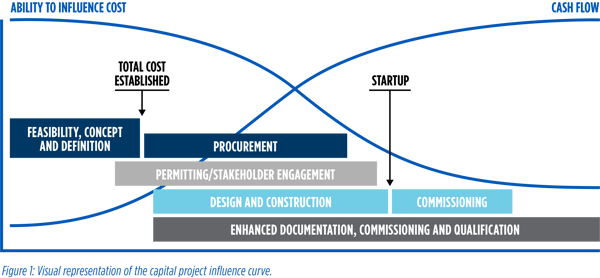Though it might seem counterintuitive, hitting pause on a project before design can actually help accelerate the overall schedule. According to research by the Construction Industry Institute, the use of front-end planning can decrease a schedule by 7% to final delivery and reduce project costs by 10%.
This is made possible by incorporating front-end planning — a collaborative process to establish a detailed scope of work and strategy for execution of the project approved by all stakeholders and project staff — to chart out the path forward through execution. Though it might take more time upfront, front-end planning can help deliver predictable outcomes for capital projects, as well as cost and schedule benefits, through planning and making decisions early in the process.
Whether planning a new build, considering modifications to an existing facility or evaluating repairs versus replacement options, decisions and strategic planning early in a project lifecycle allow for changes to be made with smaller financial and schedule impacts to the project as represented in Figure 1.

The benefits of front-end planning can also extend into a seamless transition to project execution. Strategic front-end development incorporates members of the project execution team. This allows for critical components such as constructability and project execution plans to be integrated into the front-end planning and presented in a transparent setting to the entire project team. This can facilitate a quicker transition from development to design and execution as key members of the front-end planning team may continue into subsequent stages with familiarity of the project implementation plan.
This approach relies on constant communication and ongoing verification of assumptions to incorporate feedback and direction to meet the overall project and client goals. This results in a project scope that the client has steered and a transparent cost buildup which the client understands. This can help with stakeholder acceptance and approval of a project to advance to detailed design and execution.
This approach also offers the potential to efficiently decrease the overall time to project completion compared to other project implementation approaches. Integrating the project execution team allows specifications, bids, and selections to occur during the overarching front-end planning evaluation. This structure allows for tasks to be completed in parallel with the same project team working with the client at each stage. Ultimately, this puts the client in control of their project with the data to make informed decisions and an agile team that can fit the project approach to match the client’s objectives.
Learn how an integrated team approach also benefits EPC project delivery to generate reliable and clean power for an independent power producer.

